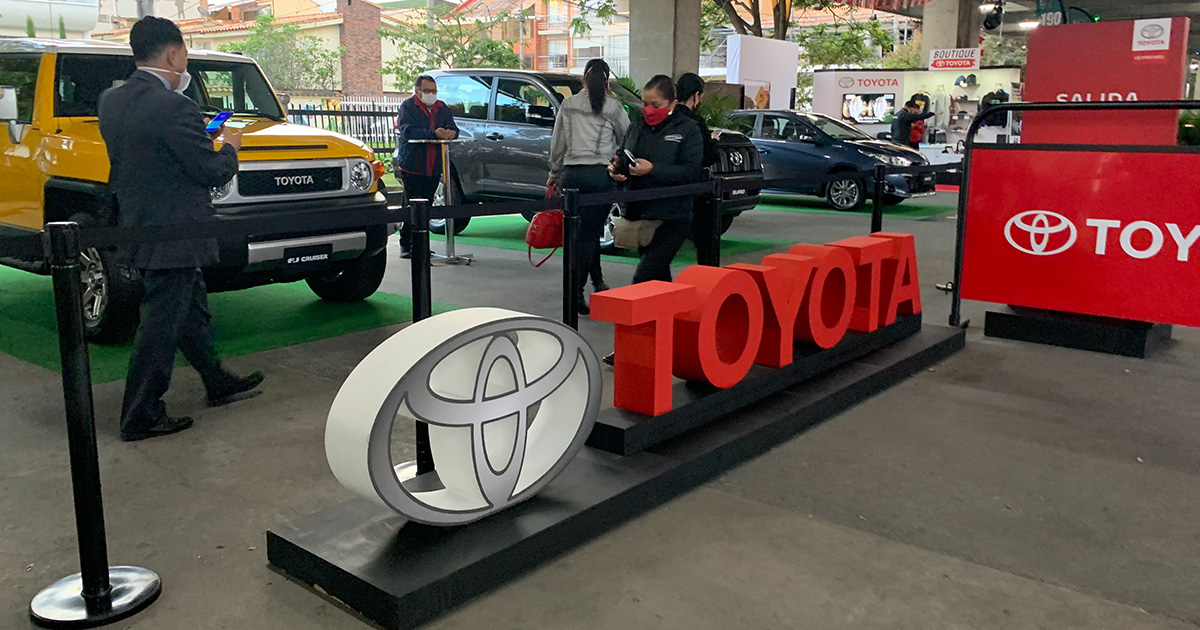Movilidad sostenible el camino de Toyota
17 October 2022
En la industria del automotriz, la movilidad sostenible va mucho más allá de los coches, influye en la vida, la filosofía y la innovación constante.

Cuando se habla de un mundo que apuesta por la sostenibilidad, es imposible no mirar a la industria del automóvil y lo que están haciendo por nuevas tecnologías menos contaminantes. Sin embargo, para empresas como Toyota, la movilidad sostenible va mucho más allá de los coches e impacta en la sociedad desde su filosofía, su relación con los demás y la innovación.
En palabras de Dino Tanaka, presidente de Automotores Toyota Colombia, las empresas de este sector deben evolucionar para convertirse en empresas de movilidad sostenible desde donde contribuyan a la solución de los desafíos actuales en materia ambiental, de tránsito e incluso de seguridad.
La apuesta de Toyota por esta movilidad se basa en tres pilares fundamentales. En primer lugar, las nuevas tecnologías, la movilidad actual depende en gran medida de los vehículos tradicionales de gasolina o diésel, pero traer nuevas tecnologías como híbridos, híbridos enchufables, celdas de combustible y baterías EV puede mantener la accesibilidad de la movilidad y mejorar el rendimiento. medio ambiente, esto sumado a más y mejores elementos de seguridad para minimizar los accidentes fatales.
El segundo pilar es KINTO, una nueva plataforma de negocios que ya se ha desplegado en Japón, Europa, Estados Unidos y muchos países de Sudamérica y, de hecho, en Colombia también iniciaron su programa piloto KINTO este año. “¿Qué hace KINTO? Es una plataforma de negocios para proporcionar autos compartidos, una experiencia de alquiler de vehículos o servicios que conectan a los usuarios privados de vehículos y el transporte público. Para mí es una gran transición pasar de la adquisición de vehículos al uso de estos, la comodidad de la movilidad y el buen impacto en el medio ambiente pueden convivir con la menor carga financiera de poseer un vehículo”, explica el presidente Tanaka, quien agrega que el término KINTO proviene de una antigua historia china en la que una nube mágica puede mover a una persona del punto A al punto B a la velocidad de la luz.
El tercer pilar y uno de los más importantes para Toyota es el ESG, es decir, factores ambientales, sociales y de gobierno. En su apuesta por tener un impacto significativo en el medio ambiente, han adelantado iniciativas como Playa Toyota, para sanear las playas, o Bosque Toyota, con el que han plantado más de 15.000 árboles en Antioquia y Cundinamarca. En otras iniciativas que se llevan a cabo en el país, recientemente se anunció el patrocinio de Toyota a la selección colombiana de voleibol femenino para su primera participación en la historia en el campeonato mundial. La decisión se tomó para promover el poder del deporte y la mujer como inspiración para el país. También apoyan a la comunidad Wayúu donde donaron paneles solares para ayudar con las actividades artesanales tradicionales y sus problemas ambientales a una comunidad de más de 300 personas. Otro programa interesante es el concurso Dream Car, donde se invita a los niños a dibujar el coche de sus sueños, lo que ha servido de inspiración para pensar en el futuro desde una perspectiva 'fuera de la caja'.
También han adelantado acciones encaminadas a su política de movilidad para todos, que van mucho más allá de los vehículos. Por ejemplo, ofrecen prótesis de piernas para personas con discapacidad o sillas de ruedas para perros. El presidente Tanaka enfatiza que se debe brindar movilidad a personas o animales que no tienen voz, y que la movilidad sostenible no se trata solo del medio ambiente.
Híbridos, ¿una buena opción para Colombia?
Si bien las discusiones están girando hacia estas nuevas tecnologías, como las baterías EV, como la solución final a los problemas ambientales relacionados con los vehículos, la realidad es que en países como Colombia existen limitaciones de infraestructura, como la falta de estaciones de carga y, por ello motivo, tiempos de espera muy largos para acceder a la electricidad en las estaciones que ya existen, por lo que opciones como los híbridos se presentan como la mejor opción en mercados como el local.
“Yo creo que en Colombia los híbridos son la mejor opción práctica porque no requieren inversiones adicionales, y no tienen esa ansiedad alta de quedarse sin carga y no tener estaciones cerca. Y es probablemente la mejor transición de los métodos tradicionales a las baterías de EV futuristas, las celdas de combustible o las nuevas tecnologías. Creo que la tecnología híbrida puede brindar el mejor equilibrio de muchos factores en la Colombia de hoy”, argumenta el presidente Tanaka.
Sin embargo, la empresa destaca que un gran problema en este renglón es la cuota de importación de vehículos híbridos, camionetas y SUV que provienen, por ejemplo, de plantas productivas en Brasil y Argentina. Estas altas restricciones comerciales encarecen los productos de otras regiones y limitan la capacidad de la industria para brindar la mayor cantidad posible de opciones a los usuarios colombianos y que estos elijan la que mejor se adapte a sus necesidades.
Fuente: Forbes Colombia





